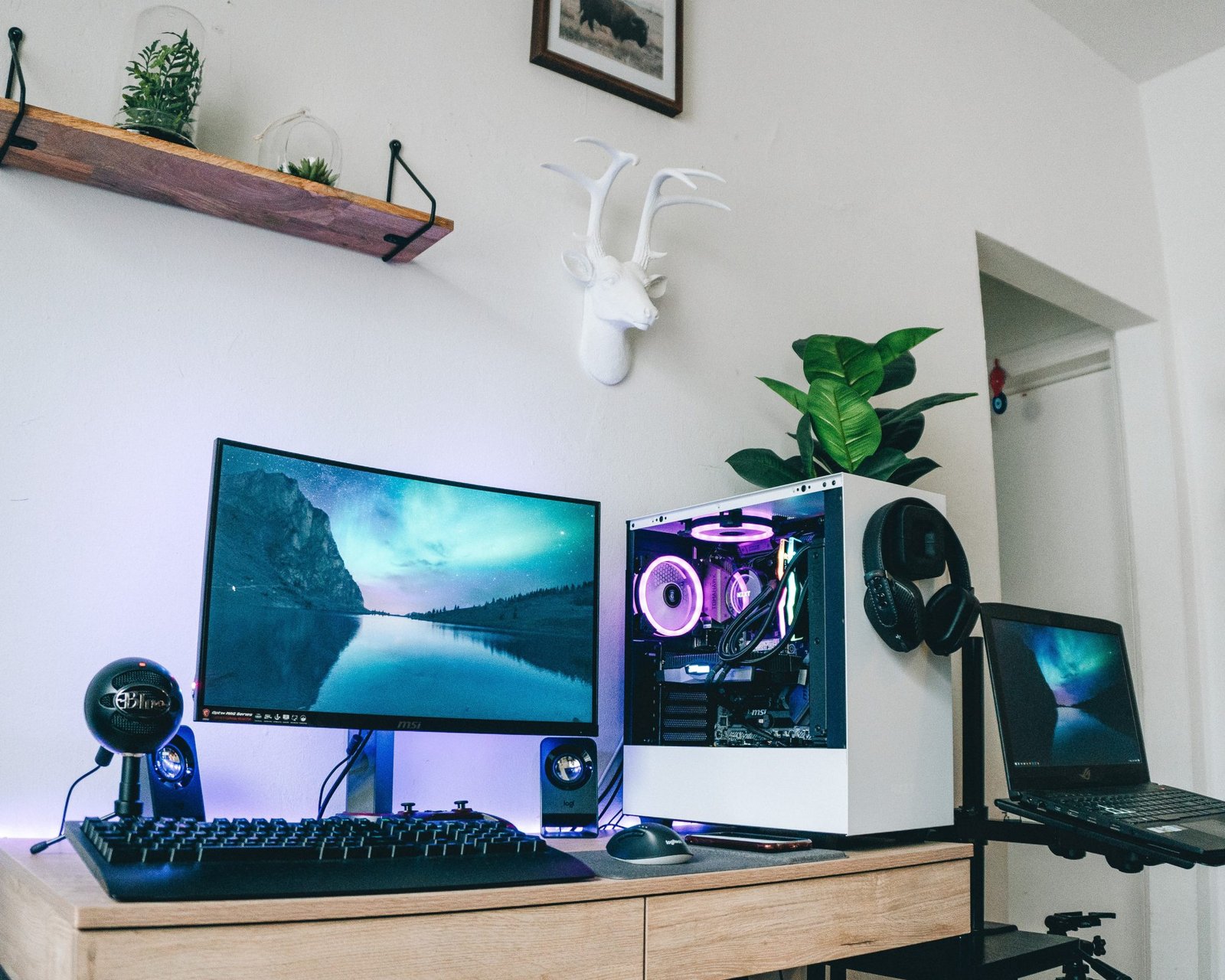
Step-By-Step Guide: How To Build Your First Gaming PC
Building your first gaming PC will be exciting and daunting at the same time, but don’t be discouraged because you can pull it off easily with enough knowledge and research.
The first and most important part is the planning phase, where you need to familiarize yourself with your goals and the purpose of building your gaming rig.

The next step is to find reliable sources to purchase the components you want and make sure that every part is compatible with the other. After choosing your parts, it’s time to start building your PC.
Follow this helpful step-by-step guide to streamline the building phase so you can enjoy your first gaming rig.
Get Your Tools Ready
Before you start building, make sure that you get all the important tools ready for the building phase. You will need a small flashlight, a screwdriver kit, a grounding strap, and a thermal paste tube. The market has several screwdriver kits, but the best ones for building computers are magnetic, helping you pick up small screws or bolts easily.
If you can’t find a small flashlight, using your smartphone flashlight will work conveniently. The thermal paste tubes aren’t too expensive and the substance is important for keeping your CPU cool. The grounding strap or anti-static wristband will keep you and the components safe from sudden static discharges.

Inner Assembly Phase
The first step in the inner assembly phase is to prepare your motherboard, which must be done outside the case. Place the motherboard on a smooth, flat surface, but never start building on a carpet to avoid ruining the carpet or getting fibers inside your components. The PC builders at https://pcbuilderz.com/ suggest that installing as many parts as possible before screwing the motherboard into the PC case is the best choice.
Get the CPU and place it gently on the designated CPU socket without pressing too hard. Double-check the alignment and if it’s correct, you can secure it with the metal arm. The next component should be your SSD or HDD, which you will place at the M.2 slot. They will need an extra push to secure them in place, but they should slide in easily. Take a screwdriver and secure the M.2 SSD or HDD in place. Then, place the thermal guard on top of the slot and screw it in place.

The next parts should be the RAM sticks, they should be placed one spot apart because it helps you get the most out of your memory and CPU. Flip the plastic clips down on the sides, insert the RAM sticks with a little force until it makes a clicking sound. Flip the plastic clips up to secure the sticks in place. The next component should be the GPU, which you need to remove several expansion slots for, but it mostly just needs two slots.
Unscrew them open and line the GPU with the PCle express slot, pushing it down until you hear a click. The next step is to install the motherboard to the PC case. This is fairly easy and there should be a highlighted rectangular spot for it. Try not to screw everything in place tightly just yet and just screw it enough to keep everything safely in place.
Outer Assembly Phase
Then comes the outer assembly phase, which is fairly easier than the first phase, and you just need to follow the manual and install the power supply then screw it in place. Make sure you position the power supply fan upward if the case will be on a carpeted floor or downward for a hardwood floor. After securing it in place, it’s time to install the cooling system on the top side of the case and screw it in place. Mount the system bracket onto the motherboard, apply half a pea-sized drop of thermal paste on the CPU, and then attach the pump on top of it.
Plug all the wires needed at the right spots by following the manual to minimize mistakes for connecting the right ones to the motherboard. Before closing, read the manual checklist for the cable management phase to ensure that every plug and socket are connected at the right spot. Tidy up the cables to enhance airflow inside and then you should be ready to close up the case. Plug the HDMI cable into your monitor, flip the power switch on, and your new gaming rig should be ready for you now.

Being informed and researching every step is crucial for your safety and sanity, as well as the functionality of the gaming PC. Read the manual of each component, double-check its compatibility, and follow expert guides to ensure that every step is done correctly. It’s normal to feel intimidated or nervous, especially if it’s your first time building a PC from scratch. But as long as you’re assembling every component in the right slot and are using the right screws and connectors, then there is nothing to worry about.








